It’s been a busy summer, as they all are, but this one’s been particularly hectic for Marc and I, juggling our jobs with farm work (including selling our fresh eggs and extra veggies or pickling all the extra cucumbers we planted), berry picking, making large batches of kombucha (now with fair trade green tea), and (gasp) a bit of hiking time.
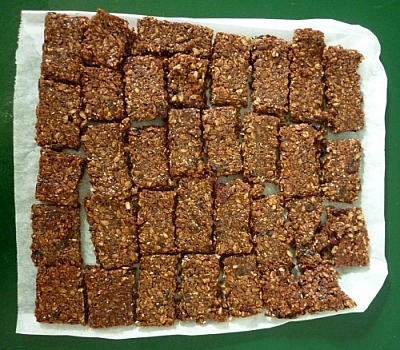
We were particularly keen to explore granola, especially after we somehow burned a batch and later messed up our first stab at granola bars. I blame really hot ovens. Oh, and the bad whiskey jack bar recipe I didn’t quite follow!
But all that’s behind us now that we delved deeper into our experiments with granola. I’ve adjusted the whiskey jack bar recipe to compensate for my earlier adjustments, and the results are much better. At least they’re bars this time and not gooey granola!
Still, we’re not quite ready to make some for anyone outside the family yet. My niece’s response when asked if she liked the first batch was, “Yes,” but the answer to an offer of seconds was a firm but polite, “No, thank you.” I haven’t tested the second batch on her yet so I’m not taking any risks!
We’re much more confident about our granola. Made with LoonSong Garden’s biodynamic oats from Manitoulin Island, our granola contains as many local ingredients as possible.
The superstar nut we use is the Ontario peanuts we shell ourselves. Combined with all-natural almonds, walnuts, and cashews, as well as hulled pumpkin seeds, we use the food processor to chop the nuts finely.
We then add wheat germ, bran flakes, ground flax seeds, sesame seeds, hulled hemp seeds, and sunflower seeds.
Next come the liquids, a mixture of either Creekbend Farms honey and organic Ontario peanut butter; Sucrerie Séguin Sugarbush maple syrup and maple butter; organic agave nectar and organic apple butter; or almond butter and molasses.
Once the granola is baked, we stir in the dried fruit (cranberries, raisins, and currants).
A full batch of granola contains seven and a half cups of dry ingredients and half a cup of liquid ingredients. You can order a full batch for twenty-five dollars or twenty-nine dollars and fifty cents for the maple flavour (half orders may be possible so be sure to inquire).
Get creative with your granola — eat it as cereal, sure, but you can cook with it, too. One customer made oatmeal cookies with it!
Browse the Garden Vegetables gallery — click any image above to view a full-sized version in a pop-up carousel.
With the summer nearly done, we're relieved most of our farm work is drawing to a close.
Our meat birds were butchered at the end of July — we have just a few left so contact us if you'd like some!
Other than feeding the cows twice a day, Marc's now tasked with hauling boxes full of veggies back to the house. I'm still taking care of my red-sex laying hens, though sadly, I lost a few.
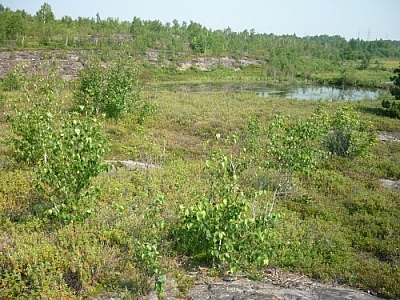
We also lost weeks of wild blueberry picking when the weather turned in early August. At first, we were thankful to see all the rain, but then it didn't stop, and then it got cold... and then blueberry season was over. We confirmed this dreadful fact yesterday.
So, we only managed to fill about half the orders we received. We deeply regret if anyone didn't get any blueberries. We're in the same position and very discouraged we only got to dehydrate one jar!
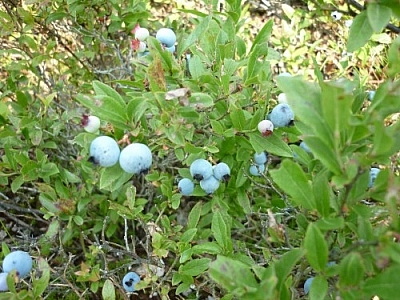
But it wasn't just a shorter season that defeated us. We were picking at about half the rate we usually do. Many berry bushes were too dry to have produced fruit, while others had fruit that was already dried out by the sun. The berries were small and difficult to pick, hidden beneath leaves and under the shade of small trees.
While we can rationalize that it was just a bad or early season, we must acknowledge that the berry seasons are earlier and drier because of climate change.
It dawned on me as I toiled under the hot sun, as I hoped for a normal season next year, that as the world around my parents and grandparents changed, they also hoped for things to go back to the way they were, but it never happened. We're faced with the reality that blueberries are no longer abundant and may never be again, and that devastates me.
To make matters worse, the City of Greater Sudbury has decided to build a road right through prime blueberry habitat to alleviate traffic on Notre Dame Street. The large wooded hilly area behind Barrydowne and Maley Drive used to be designated as a conservation area, but that status was revoked to approve the new road construction. Many of the spots where Marc and I picked beautiful big berries last year were either destroyed or covered in road dust and oil residue when we visited.
Not only has Sudbury sacrificed natural blueberry habitat — and the livelihoods of countless seasonal workers — it's fragmented bear habitat, bears that might now find their way into the city looking for food. The whole situation is discouraging.
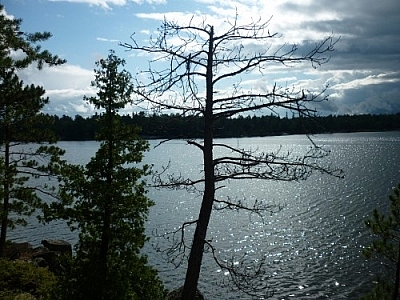
So to take our minds off of things, Marc and I went on a day hike in Mashkinonje Provincial Park on a gorgeously wet and rainy Saturday, and totally enjoyed ourselves, even after the sun came out and dried us off. There's always a bright side.

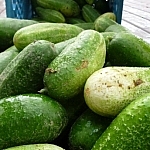
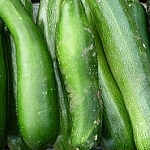
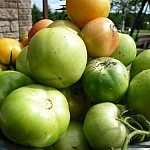
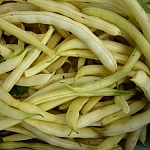
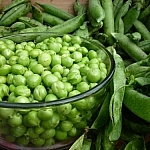
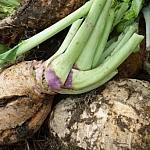



Search Niackery
×